Abstract
Using organ culture, high-resolution liquid chromatography, and microchemical techniques, we demonstrated the efficient incorporation in vitro of several radiolabeled precursors into the two juvenile hormones of Manduca sexta. JH II, a homosesquiterpene hormone, reported from M. sexta as well as several other insects, incorporates radiolabel from acetate, mevalonate, and propionate. JH III, a sesquiterpene hormone recently reported as a natural product of M. sexta, incorporates label from acetate and mevalonate, but not from propionate. Based on the position of the labeled atoms in the precursors and upon the position of incorporation obtained from label-distribution data, a scheme for juvenile hormone biosynthesis is advanced.
Keywords: organ culture, corpora allata, high-resolution liquid chromatography, homomevalonate, homoterpenoid
Full text
PDF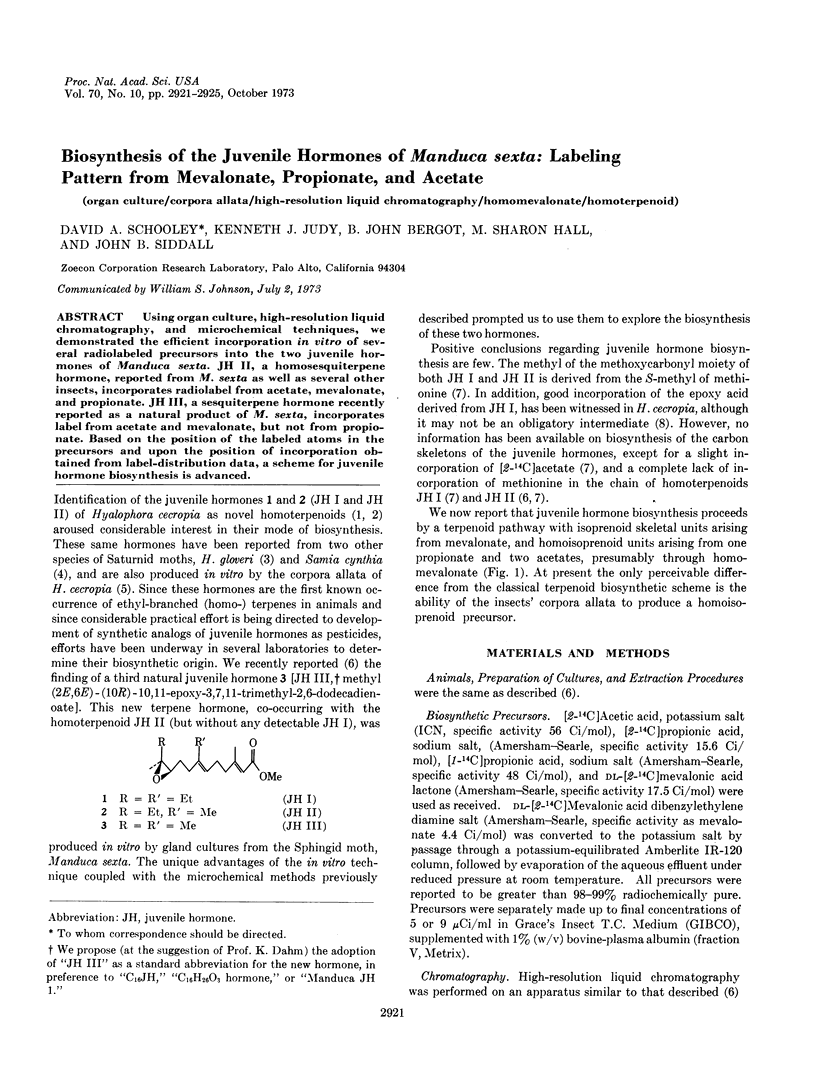
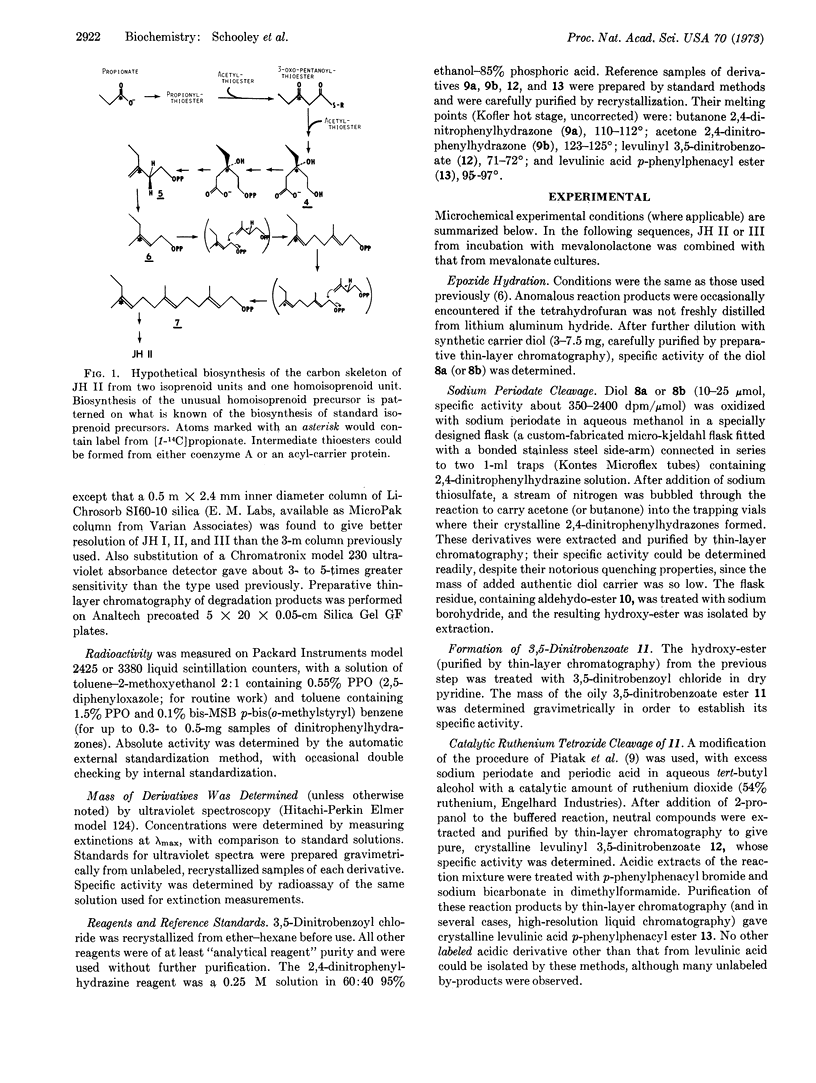
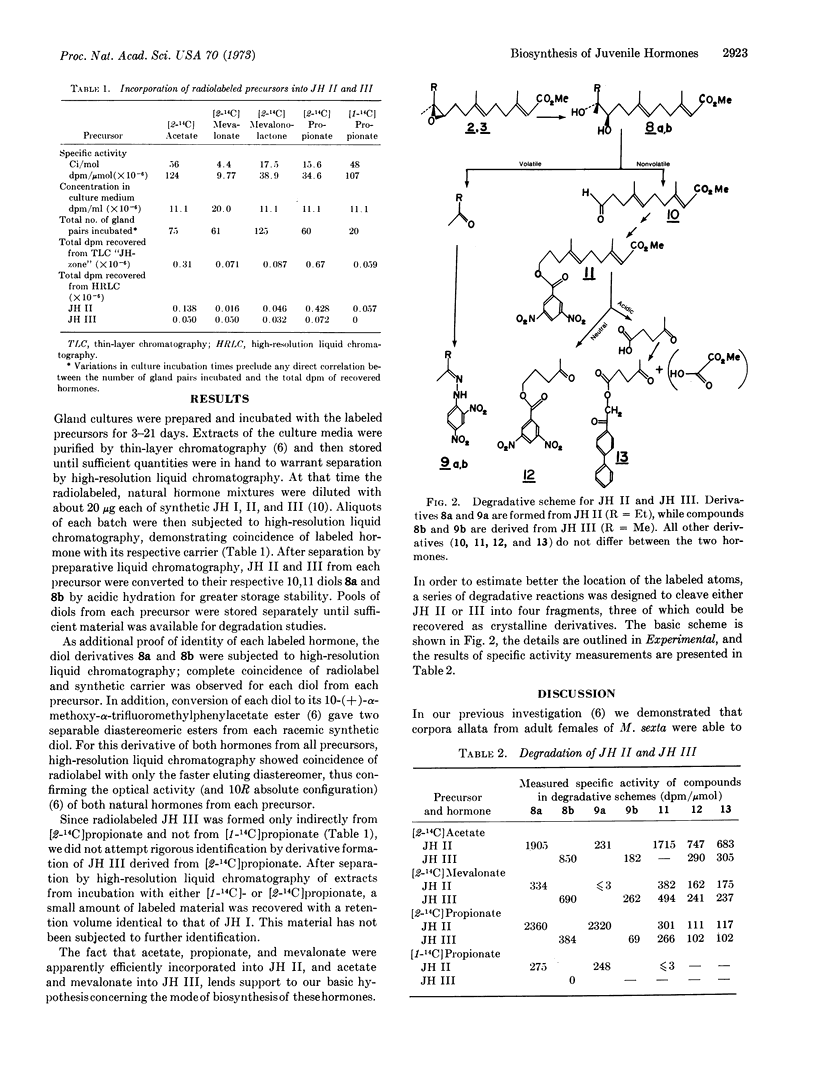
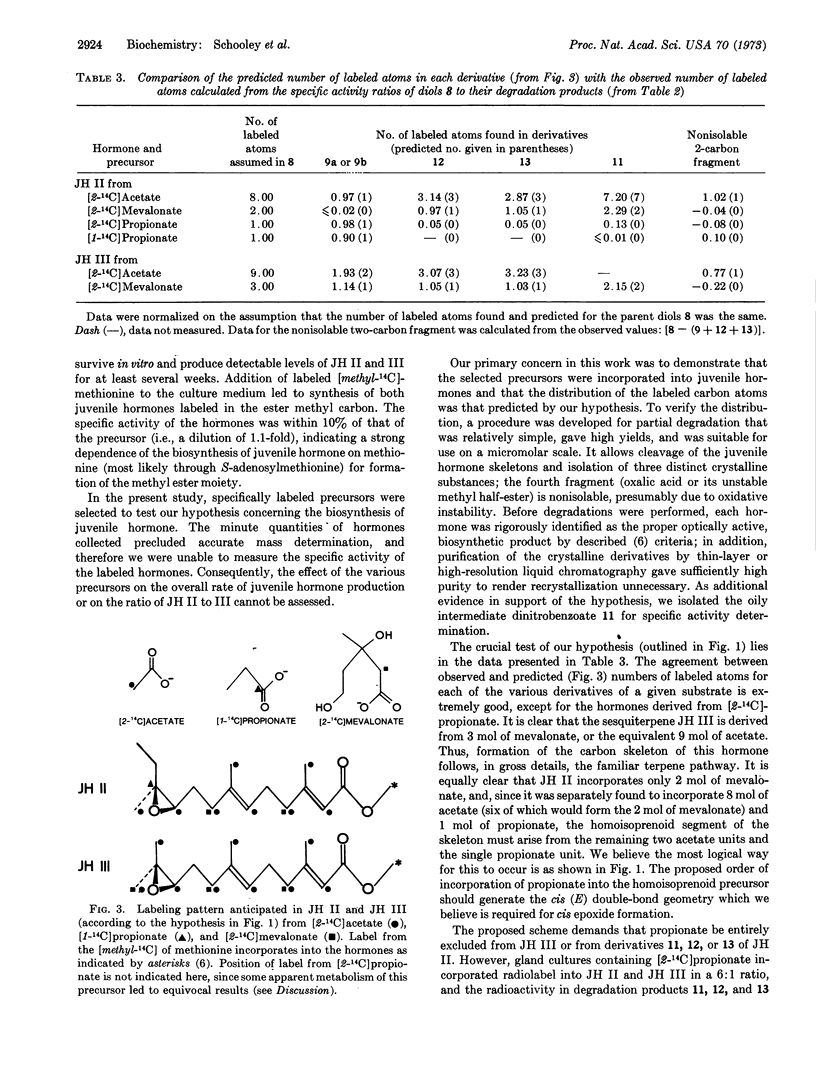
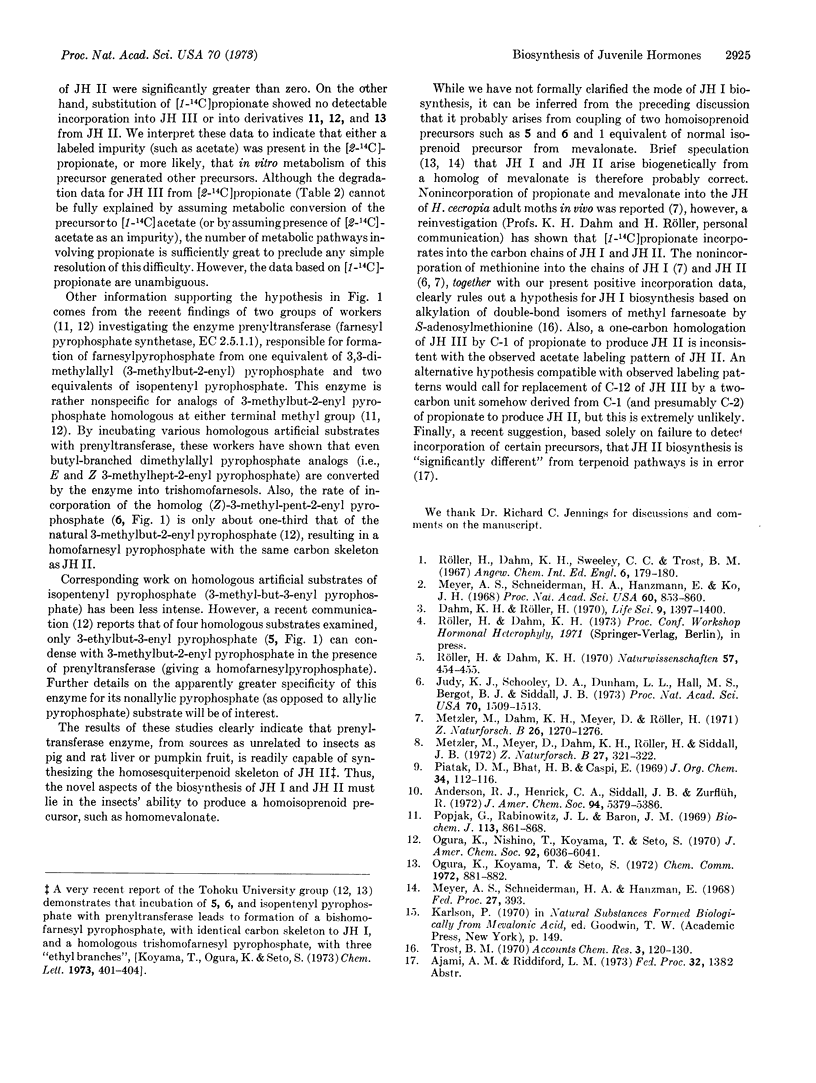
Selected References
These references are in PubMed. This may not be the complete list of references from this article.
- Anderson R. J., Henrick C. A., Siddall J. B., Zurflüh R. Stereoselective synthesis of the racemic C-17 juvenile hormone of cecropia. J Am Chem Soc. 1972 Jul 26;94(15):5379–5386. doi: 10.1021/ja00770a039. [DOI] [PubMed] [Google Scholar]
- Dahm K. H., Röller H. The juvenile hormone of the giant silk moth Hyalophor gloveri (Strecker). Life Sci II. 1970 Dec 22;9(24):1397–1400. doi: 10.1016/0024-3205(70)90099-8. [DOI] [PubMed] [Google Scholar]
- Judy K. J., Schooley D. A., Dunham L. L., Hall M. S., Bergot B. J., Siddall J. B. Isolation, Structure, and Absolute Configuration of a New Natural Insect Juvenile Hormone from Manduca sexta. Proc Natl Acad Sci U S A. 1973 May;70(5):1509–1513. doi: 10.1073/pnas.70.5.1509. [DOI] [PMC free article] [PubMed] [Google Scholar]
- Metzler M., Dahm K. H., Meyer D Röller H. On the biosynthesis of juvenile hormone in the adult Cecropia moth. Z Naturforsch B. 1971 Dec;26(12):1270–1276. doi: 10.1515/znb-1971-1215. [DOI] [PubMed] [Google Scholar]
- Metzler M., Meyer D., Dahm K. H., Röller H. Biosynthesis of juvenile hormone from 10-epoxy-7-ethyl-3,11-dimethyl-2,6-tridecadienoic acid in the adult cecropia moth. Z Naturforsch B. 1972 Mar;27(3):321–322. doi: 10.1515/znb-1972-0321. [DOI] [PubMed] [Google Scholar]
- Meyer A. S., Schneiderman H. A., Hanzmann E., Ko J. H. The two juvenile hormones from the cecropia silk moth. Proc Natl Acad Sci U S A. 1968 Jul;60(3):853–860. doi: 10.1073/pnas.60.3.853. [DOI] [PMC free article] [PubMed] [Google Scholar]
- Ogura K., Nishino T., Koyama T., Seto S. Enzymic condensation of 3-methyl-2-alkenyl pyrophosphates with isopentenyl pyrophosphate. J Am Chem Soc. 1970 Oct 7;92(20):6036–6041. doi: 10.1021/ja00723a037. [DOI] [PubMed] [Google Scholar]
- Popják G., Rabinowitz J. L., Baron J. M. Artificial substrates for prenyltransferase. Biochem J. 1969 Aug;113(5):861–868. doi: 10.1042/bj1130861. [DOI] [PMC free article] [PubMed] [Google Scholar]
- Röller H., Dahm K. H. The identity of juvenile hormone produced by Corpora allata in vitro. Naturwissenschaften. 1970 Sep;57(9):454–455. doi: 10.1007/BF00607739. [DOI] [PubMed] [Google Scholar]


